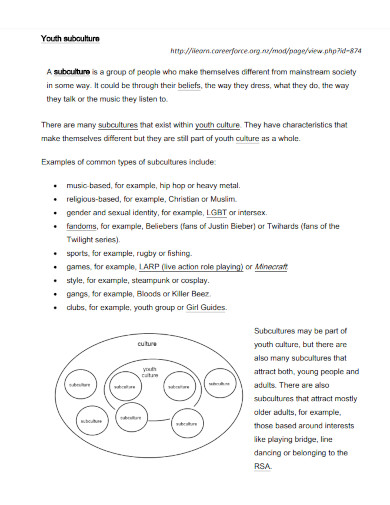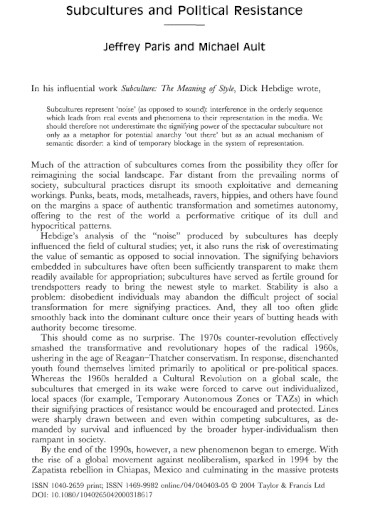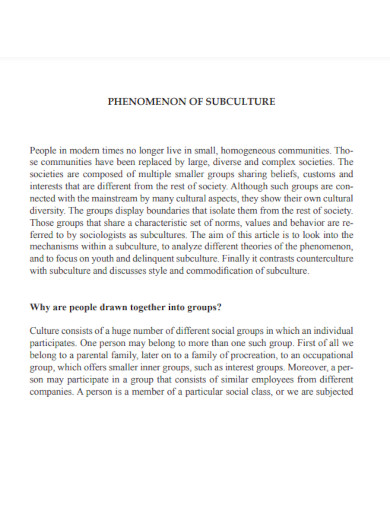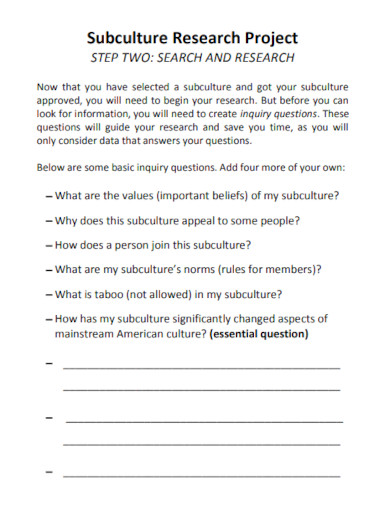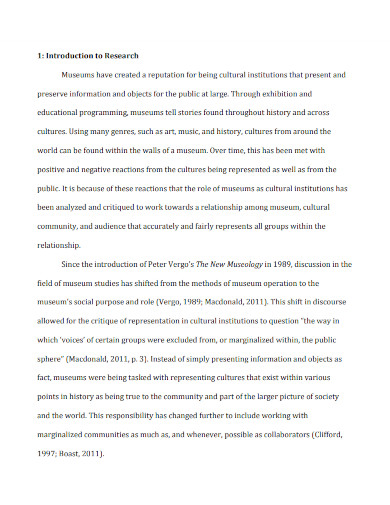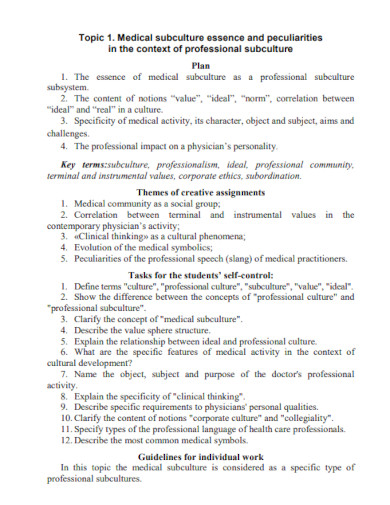6+ Subculture Examples to Download
Culture has a lot of subcategories that collate various archetypes, categories, and elements into various lower types. A subculture is a subcategory of culture that is more nuanced and specific that delves deeper into various themes and tones of ethnicities and ethnic groups. social groups, and ideas.
1. Youth Subculture Template
2. Subcultures and Political Resistance
3. Phenomenon of Subculture Template
4. Subculture Research Project
5. Subculture & Popular Culture
6. The Graffiti Subculture Template
7. Medical Subculture Template
What Is Subculture?
A subculture is a subgroup or a more specific category of people that belong to a specific social or ethnic group within a specific timeframe and location. Subcultures represent a specific portion of the population that has a large variation when compared to the main group the population represents. These subcultures may have contexts, themes, objectives, and ideas that deviate from the norms of the mainstream population’s beliefs.
How to Identify a Subculture
In Maslow’s hierarchy of needs self-actualization is the most important need a person can achieve in their life. This means that the person will need to be aware of their identity, and place in the world to achieve totality and satisfaction in their life. Learn to identify various subcultures to help broaden and enhance your view of the lives of the people around you.
Step 1: Select a Population to Research
Begin by selecting a population you want to research and focus on. This is to ensure that the data you will collect and use are adjacent and fully related to the population you have chosen.
Step 2: Determine if There are Pockets of the Population that have a Stratification
Stratification is a word people use to describe if there are categories of various entities, objects, events, etc. that are split into different groups. You must determine if there a stratification exists in the population
Step 3: Check if The Pockets of the Population have a Shared Identity and Meaning
A subculture will form when people who have a shared identity, meaning, and similar experiences come together. You must check if there are pockets of the main population who have a shared identity, meaning, and culture,
Step 4: Identify if There is Marginalization and Resistance in the Pockets of the Population
Another element that is present in subcultures is that there should be marginalization or resistance to the norm that is present in the pockets of the population. You must identify if there is marginalization and resistance in the pockets of the population, usually in the form of discrimination.
FAQs
Are subcultures important?
Yes, subcultures are pockets of the population that deviate from specific norms, ideals, objectives, ideas, etc. from the mainstream population. These subcultures present themselves to challenge specific norms, rules, thinking, etc. that will progressively influence how people act toward each other. Therefore subcultures are important, as they will minimize the chance of having an echo chamber dictate various rules and norms of how people live.
Can you categorize age as a subculture?
Yes, age is a subculture as there is stratification, shared identity, shared meanings, similar appearances, etc. Therefore people can consider age as a category under subculture due to the existence of these elements.
Culture vs. subculture; what is the difference between culture and subculture?
Culture is shared knowledge, values, customs, and materials or material culture that is prevalent in a specific society, population, social group, or group. Subculture is a small group of people that represents the minority of the mainstream population of a specific location or period.
Subculture is a minority group that represents a small part of the mainstream population in a given area, period, or context. These subcultures will present various ideas, concepts, norms, beliefs, and actions that are heavily different from the norm of the major population. It is important to understand and identify the different subcultures in the environment around you. This is because understanding and empathizing with these groups will help you better yourself.



